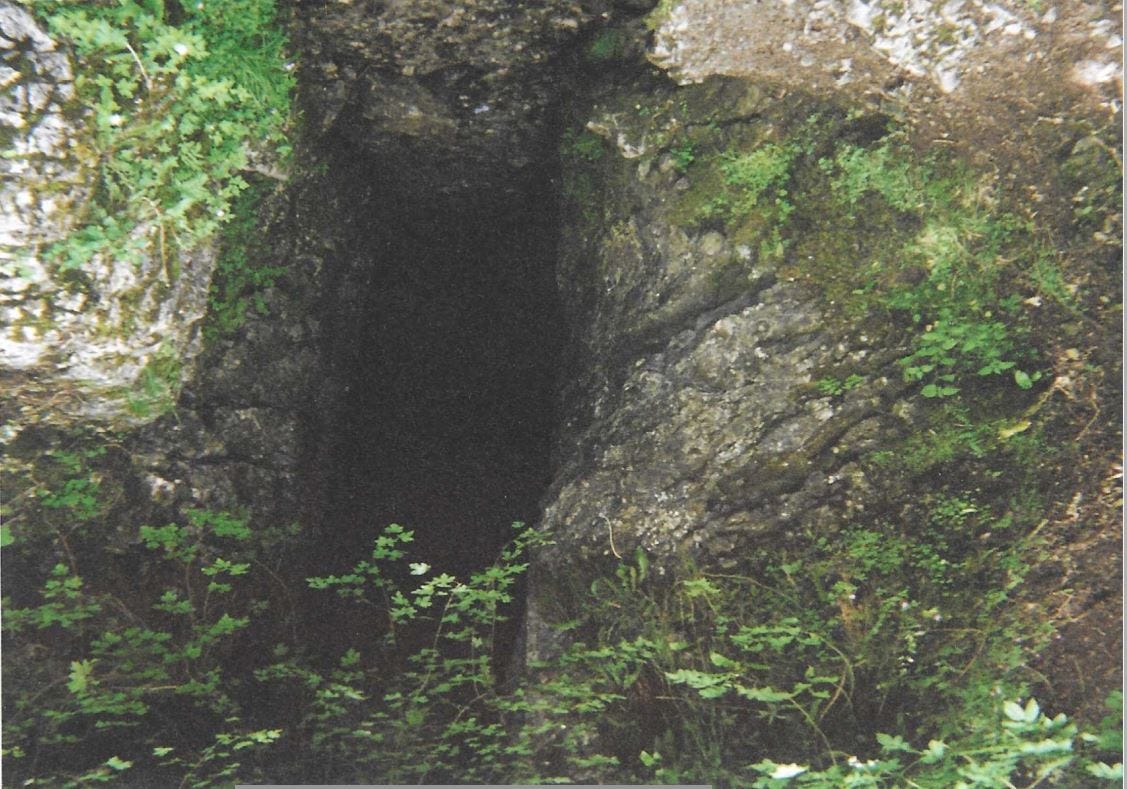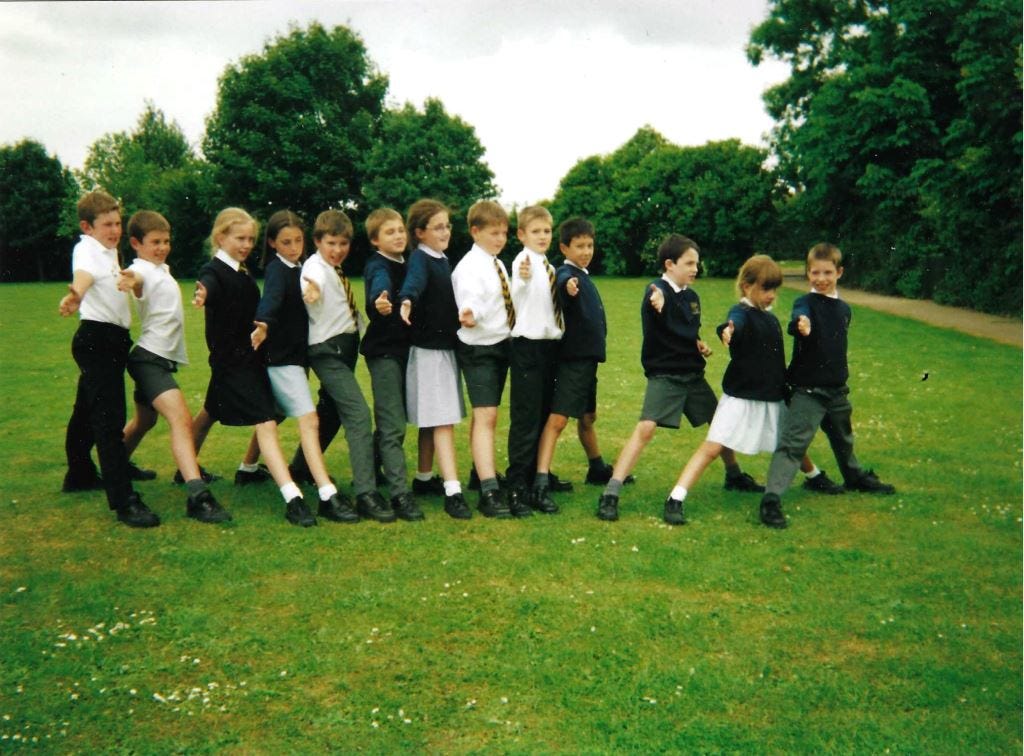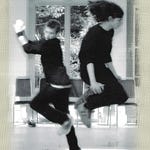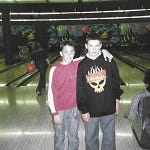‘Cobscook Bay’ is a strange little song. It opens with a hushed guitar line that has a twinkling, exploratory quality – I’m put in mind of the halting step of the ‘cows [who] come gingerly out of the barn’ to test whether or not ‘the ground is warm’ in the near-contemporaneous ‘Onions.’ That song, from The Coroner’s Gambit, has an unusual gentleness, an attentiveness to the natural world which finds kinship and solace in its cycles of renewal, even though our narrator at first isn’t sure if he can stand it: seeing the geese ‘heading north again’ and the earth’s ‘cold heart… melting,’ the singer ‘can feel my heart in my throat again’ and thinks, as if by a kind of sympathetic magic, of those ‘new onions growing in the ground.’ On encountering ‘Cobscook Bay,’ released on the 2000 EP Isopanisad Radio Hour, the first-time listener might be expecting lyrics of a similar tenor, and the second verse seems appropriately wonderstruck by the possibility of new, fragile life:
Cow gave birth and her calves are snow white
They huddle up close together at night
And the mamma cow leans down and cleans her young
Licking their faces with her tongue
But we’re not there yet, and what happens in the verse before this makes the image land distinctly differently.
First, we’re introduced to a narrator who seems to be living quite a lonely existence. They have some company – ‘we’re alone most of the time these days’ – but that plural pronoun never appears again, and the following lines are, in the words of a minor Morrissey B-side, ‘a succession of people saying goodbye.’ We don’t know anything about Jill, who ‘used to come by’ but then ‘went away,’ other than the fact of her absence. Something about the cadence of ‘Gail used to come around and trash the joint’ is reminiscent of the nameless ‘chick that used to dance a lot’ who ‘got up and slapped Johnny’s face’ in Thin Lizzy’s ‘The Boys Are Back In Town,’ a song John Darnielle has covered on multiple occasions. But unlike the boys, Gail isn’t coming back, and neither are ‘you’ – whoever that might be to this narrator.
The reason is as shocking a left-turn as you’ll ever find in a Mountain Goats song, and all the more so for the tidy symmetry of its description: ‘She moved off to Dana Point / And you went along, just for the ride / And you both committed suicide.’ The only rational response to this sudden, incomprehensible act is complete bewilderment: where the fuck did that come from? But just as soon as the idea has surfaced, it’s immediately replaced by another image and an emotional response to that image, the simple conjunction ‘and’ begging the question of relation or non-relation: ‘And day was breaking over Cobscook Bay / And I’ve never seen anything like it in my life.’ All the previous verbs, since the initial acknowledgement that ‘we’re alone,’ have been in the past tense. This reaction is present, or rather ongoing: no sunrise since has been comparable to the experience of this one.
In the second verse, the force of this recognition seems to have made the suicide present, active, in-progress again – as if it could still be stopped, if only the narrator wasn’t so far away: ‘And you’re falling off that cliff somewhere in California / Which I’ve never seen.’ What he has seen is the cow, and her careful tenderness, her commitment to keeping warm and nurturing something which has just been born. Between these poles of life and death, between the fatal plunge and the sunrise, there’s nothing but airplanes – ‘unmarked,’ as if doing everything possible to resist their co-option into symbolic meaning – which ‘buzz the air’ overhead in the service of a thousand journeys which have nothing to do with the only one the singer is able to think about, conducted by people who have never so much as thought about him, Gail, or ‘you.’ I put the pieces all together, but I don’t know what they mean. The flat refusal of these various events to coalesce into any narrative which could provide anything like a satisfying ‘answer,’ remaining instead on the level of pure and, reminds me in a darker key of something Seamus Heaney said was the hallmark of John Clare’s poetry: ‘the inexorable one-thing-after-anotherness of the world.’1
In reaching for even this loose interpretative frame, I’m conscious that I’m reading partly against the grain of the song. Darnielle introduced ‘Cobscook Bay’ on its first live outing in 2007, by fan request, as one of ‘a group of songs where I look at it and have no idea what I was talking about. Where that story came from, what it was driving at, who these people are, and why they had to die.’ Not all of these questions are answerable, but what’s undeniable is that this isn’t the first time John has had cause to ask them. Speaking to VH1 after the release of Tallahassee, Darnielle acknowledges that ‘there’s a sadistic pleasure in writing about bad situations,’ but that ‘the difficult part in writing about [the Alpha Couple] is that I feel like I’m doing harm to someone I know.’2 A couple of years earlier, he told Cory Brown that he reached a point while writing Sweden ‘when I honestly asked myself whether I could stand punishing my characters any more … It really was entirely within my power to grant or deny them the one thing they desperately needed, and I wouldn’t give it to them because then I wouldn’t have my piddling little songs.’ Observing that his ‘mission in life’ has been to ‘dangle [a little] joy’ in front of his characters’ noses and then make them ‘beg fruitlessly for it,’ he wonders aloud ‘whether there isn’t something very wrong with the creative impulse, because I think that this is basically what all artists do.’
Some artists, however, care less than others about leavening the violence and suffering their narratives explore with easy answers, the kind that allow you to find some or any meaning in putting ‘the pieces all together.’ And behind this strange song, and others like it which refuse the kind of coherence which can lead to closure, we might discern the hand of another self-described practitioner of ‘strange stories.’ To read a story by Robert Aickman – an author whose work ‘permanently unnerved’ the young Darnielle and significantly shaped his later writing – is to ‘find yourself embarked on a journey to an unknown destination that once reached proves even less comprehensible than the events along the way.’3 In her introduction to Compulsory Games, an anthology of Aickman’s work released in 2018, Victoria Nelson describes her subject’s commitment to ‘oblique, corner-of-the-eye effects,’ blink-and-you’ll-miss it moments where the contours of conventional reality seem to warp and shift, after which the protagonist’s life ‘never quite gets back on track, at least not in the usual way.’
If you haven’t encountered what this looks like in practice, put yourself in the position of the ten-year-old Darnielle reading Whispers magazine in 1977, and about to encounter Aickman’s narrative tricks for the first time. Celia, the sixteen-year-old protagonist of ‘Le Miroir,’ is a promising artist who has recently arrived in Paris to enrol in ‘a long-established and old-fashioned private atelier.’ Furnishing her garret apartment (‘Fortunately, Celia could depend upon an adequate allowance’), she visits a ‘low, dark, hopelessly untidy’ antique shop to pick up some mirrors – the new place has none, and the ‘crumbling’ old pile she grew up in had always had several. One in particular catches the young buyer’s attention: ‘first, for the obvious reason that she could not live without it; secondly, because it bore extremely faded traces of mysterious male and female figures round the upper part of the frame; thirdly, because the face that had just looked back at her from its shallows and depths had not been her own.’
It’s hard to imagine quite what a child of this age might have made of this chilling moment, or of the story’s many other forays into the eldritch: to take just one, the apparently literal description of Celia’s fellow art students as ‘either complete babies, feeding from bottles containing cornflour; or in certain cases, motionless skeletons, also fed with cornflour, though not from bottles, because they could not suck.’ ‘Le Miroir’ also namedrops Frederick Leighton and St. Thomas Aquinas, so overall there must have been a lot to process. On the other hand, by this point Darnielle had already taken to staying up ‘pretty late’ and presumably unsupervised in his ‘fragmenting’ house shortly after his parents’ divorce, watching ‘weird no-budget’ horror films on a local TV station. Terrified as he was by the sudden, unseen arrival of a headless corpse in the 1958 monster movie The Crawling Eye, he was also, ‘secretly-even-to-[him]self’ discovering that he enjoyed the ‘visceral horror’ inspired by ‘the senselessness of the whole sequence, since it didn’t seem related to anything.’
This response seems to bear out the words of Sacheverell Sitwell which Aickman used as an epigram for another collection: ‘it is the mystery that lasts and not the explanation.’ It lasted long enough, in any case, for the adult Darnielle to trace elements of his own approach to narrative – namely, being ‘okay with the reader feeling unsettled’ – back to Aickman, across a range of interviews discussing his fiction. Though sympathetic to those who crave ‘hard explanations,’ Darnielle prefers to ‘approach the mystery and sit with it’: ‘It’s an important moment as a reader, I think, when you can forget the question of whether you need to know what happened.’ In ‘good horror’ generally, he now expects ‘some feeling of having become destabilized, or not knowing where you’re situated.’
This ‘disquieting … vibe’ has been explored less thoroughly with regard to Darnielle’s songwriting, at least outside of its evocations of specific monsters and horror tropes. But it’s there, as early as the likes of ‘The Water Song’:
Water came springing out the side of the wall
And I guess the same thing will happen to us all
We don’t know how to explain what I mean
I mean to say it’s kind of hard to explain
Faced with a kind of generalised doom which seems essentially beyond the scope of human understanding, the singer (and with him, the Bright Mountain Choir) gleefully invites his own demise: ‘Let them kill me!’ The whole thing is set to a laid-back sequence of choppy, chiming major chords, like something you might expect to hear around a campfire in a surfing hotspot, if Jack Johnson were given to cheery evocations of the intimate entanglement of love and death: ‘I’m the glass. You’re the water that fills me / I hear them coming now: Let them kill me.’
If you find it hard to parse what’s going on here, you’re in good company: ‘Ignore the verses, they’re nonsense,’ Darnielle told a 2019 audience before exhorting them to sing the chorus ‘like you mean it’ in his last live set before the pandemic put an end to ordinary touring schedules. This admission ‘solves’ the mystery of the song in a certain, facile way: like many early Mountain Goats compositions, ‘The Water Song’ likely emerged from a practice of improvisation in which surprise was as important to the singer as the listener. Darnielle described this process as ‘the ultimate space of freedom where you can say what you mean, because you spoke before you meant it … you are hearing ideas as they are being born.’
Geoff Sanborn has recently compellingly explained how a song might come together as a result of this activity, the singer painting ‘a scenario that arises from and sinks back into empty, open space.’ And it must be something like this ‘exploratory’ process which generated ‘Cobscook Bay’ – the sense of ambient desolation, and the particularly pointless misery of yet another person having left you behind ‘just for the ride,’ leading, as rhyme has a way of doing in the words of the modern formalist poet A. E. Stallings, to an ‘alchemical,’ ‘irrational, sensual link between two words.’ Some more of Stallings’ provocations which feel appropriate to the kind of improvisatory, sound-led writing that can bring a practitioner to a place like this:
Rhyme schemes.
Rhyme frees the poet from what he wants to say.
Rhyme is at the wheel. No, rhyme is the engine.
All of that said, it still seems worthy of comment that ‘suicide’ should be the rhyme word to suggest itself, entering into the world of the song like an intrusive thought. My own experience of suicidal ideation has largely been second-hand, but I’ve seen enough of it in people close to me to recognise the truth of Anna Borges’s description in The Outline that, for many of us,
the threat of suicide isn’t like being carried over a waterfall — it is like living in the ocean. Not as sea creatures do, native and equipped with feathery gills to dissolve oxygen for my bloodstream, but alone, with an expanse of water at all sides. Some days are unremarkable, floating under clear skies and smooth waters; other days are tumultuous storms you don’t know you’ll survive, but you’re always, always in the ocean.
The Coroner’s Gambit, released in the same year as ‘Cobscook Bay,’ comes closer to those ‘tumultuous storms’ than most Mountain Goats records, and long before Darnielle started explicitly telling his listeners to ‘just stay alive.’ The songwriter’s ‘most haunted work to-date,’ it’s a body of work which, as Geoff writes beautifully in response to a quote given to Space City Rock, is not only pointed ‘toward the grave’ but approaching it ‘ferociously, as if in the state of dread and desire that precedes the moment of maximum impact.’ These recordings, redolent with fear and trembling, seem to speak powerfully of Darnielle’s answer when asked by Mother Jones interviewer Alexander Sammon ‘What scares you most?’: ‘The possibility of disaster remains horrific to me. Like when you know everything’s about to go wrong in a way that’s not controllable or knowable.’
The narrative position of the apparently powerless observer will go on to be a hallmark of Darnielle’s work, from ‘Have to Explode’ to ‘Before I Got Here.’ Around the same time, another equally striking persona of Darnielle’s is starting to emerge: that of the avenger (‘Up the Wolves’; ‘Getting Into Knives’), a figure who is considerably more certain about what’s about to happen precisely because they are the one in control – the killer dressed in pilgrim’s clothing, the landmine hidden in the sand. The chorus of ‘Horseradish Road’ concisely distils the observer’s tragic vision – ‘‘Cause in this car, in this car / Somebody’s bound to get burned / I know, I know / ‘Cause I’ve been watching the road turn.’ But in ‘Cobscook Bay,’ the narrator doesn’t even seem to have this level of preparation. The suicide in the song is presented as an alarmingly sudden decision, the whim of a moment.
Though we don’t know anything specific about the mental state of Gail or ‘you,’ we might hear its echo in the closing pages of Darnielle’s 2014 novel Wolf in White Van. ‘People don’t usually understand this when I try to explain it, which is why I’ve stopped trying … but when it came down to the actual moment, I was trying to make the right decision,’ writes Sean, our narrator, of a decision which forecloses the ‘infinite futures’ of being a ‘different person’ available to him in favour of ‘this’: positioning a rifle beneath his chin, and ‘maybe… crying, either because I didn’t want to do this or because I did, it was hard to tell’ (p.204-7). Or we might turn to a composition closer in time, the title track of The Coroner’s Gambit, which presents the suicidal impulse as less a decision, more a seduction. Here Death comes calling with a ‘dazzling’ smile, ‘sparkling’ eyes, and a ‘shiny black plastic tray’ gleaming with ‘new silk scarves.’ Our narrator wishes, repeatedly, near-frantically, that he could stay with the person he’s addressing – ‘You know how badly I wanted to / Didn’t want, didn’t want, didn’t want, didn’t want, didn’t want to lose you’ – but ultimately finds the pull of this figure and his ‘gentle grace’ impossible to resist.
The album as a whole wrestles with the memory of an ‘absent friend,’ the Pomona musician Rozz Williams, whose band Christian Death were ‘huge’ in the West Coast goth scene towards which Darnielle was drawn in the early 80s, and who became a personal friend. Those who knew Rozz, John writes in a section of the liner notes addressed to him directly, ‘had been predicting your death since the early eighties,’ and their own close association seems to have come to an end with a night in around 1990 when he ‘tried to strangle the life out of’ John in a friend’s apartment. ‘Not without reason,’ Darnielle adds in a dark parenthesis likely alluding to his own self-destructive behaviour during their acquaintance, a ‘short, very wasted period’ of heavy substance abuse from which he ‘got out eventually, and Rozz did not.’
Although the pair hadn’t spoken for eight years by the time Williams took his own life in 1998, the death put Darnielle unexpectedly and forcefully in touch with a younger version of himself – ‘the you who knew them when,’ and who was at one time embarked on a similar path, with a similar ending in mind. ‘Shadow Song’ and ‘Bluejays and Cardinals’ channel the complex grief which this event resurfaced into elegies with the plangent power of Tennyson’s In Memoriam. The latter frames the person being mourned as a type of Persephone, activating nature with his presence above ground: ‘Skies clear up if they’re overcast … Apples fatten on the trees when you walk by.’ We don’t hear about what happens to it all when he isn’t there any more, but we can take a good guess. Both songs, like ‘Cobscook Bay,’ are sung from the stunned perspective of the person left behind: ‘You slipped free / Without me.’ ‘The Coroner’s Gambit’ itself instead inhabits, with an empathetic clarity that is probably the closest its speaker can come to making peace with his loss, the perspective of a person who, on a particular day, just ‘couldn’t say no’ anymore.
When this batch of songs was released, I was the age at which Darnielle read ‘Le Miroir,’ and I’m not sure how I would have handled either its strategic opacities or its unsettling ending, in which the mirror’s ‘mysterious depths’ show young Celia the face of a woman ‘middle-aged and beyond all chance of concealment,’ and seem ultimately to destroy her physical form altogether. My own literary activities at the time were not those of a person interested in subtlety or nuance: on my family computer, with its new screaming.net Internet connection which I first remember using to look at the website for Robot Wars, I had started producing a homemade newspaper called the Wacko Weekly. Along with derivative cartoons, enthusiastic TV reviews and parodies of song lyrics, I was dedicating column inches to scabrous satirical portraits of my classmates for such social transgressions as having weird pets and crying too easily.4 Quite reasonably, some of them in turn complained, to the effect that I was served with the Year 6 equivalent of a Cease & Desist order.
I remember, at the time, feeling popular enough that I could get away with something like this, and I clearly enjoyed being the centre of gossip without having yet developed any of the shame attendant on expecting to become its subject. The things I was writing were cheap and unfair, and obviously gave me a feeling of power. I’m wondering now if my weird position in the school pecking order – part of a cohort of five kids repeating the final year of primary school for a second time, out of a justified fear that we’d only get bullied if they sent us into secondary school too early – made me see myself as aloof and untouchable, or merely detached and instinctively outside of something. Here I am, in any case, in the middle of a line of children pulling unselfconscious poses on the playing field we’ll soon be leaving to enter another world lonelier than this one, its rules more alien, its comforts less assured. In a final spritz of end-of-school camaraderie, we’re all probably about to start writing our names on each other’s shirts and backpacks, to give ourselves something to remember these last seven years by – or simply to make a mark, to say it mattered.
Sharp Small Shards of Shrapnel:
I’m not confident enough to call this a ‘source,’ but the title story of Compulsory Games turns – in the most literal, and so inadequate sense – on a man whose wife starts taking flying lessons with a neighbour for whom she eventually, incrementally, leaves him. In its final image, he stares up into the sky at their private plane only to find that the two women apparently aren’t in it: ‘the horizon had begun once more to buzz,’ and this buzzing sound grows to encapsulate ‘a cold, ear-destroying, but still quasi-human streak’ as ‘the pilotless red Moth, its proper size as uncertain as ever, hurtled across and down, absorbing and dissolving and slaying; grotesquely beyond all question that Colin could formulate or answer that he could accept’ (p.24).
Rozz Williams was known to his family as Roger Painter. He was gender non-conforming, and seems to have changed his name when he started making music. Darnielle borrowed the name Roger Painter for the teenage metalhead protagonist of his 33 1/3 book, a novella on Black Sabbath’s Master of Reality, returning to Rozz’s memory another decade after the writing of these songs.
Seamus Heaney, ‘John Clare’s Prog,’ in The Redress of Poetry. Faber & Faber, 1995.
2003 interview with Gil Kaufman, archived here: https://www.scribd.com/document/52894439/tMG-Interviews.
‘May this new collection unnerve an entire generation of readers the way I got permanently unnerved’ on first reading ‘Le Miroir.’ – Darnielle’s blurb quote for Compulsory Games
In an odd bit of unpaid product placement, Ricky Martin’s 1999 hit became a paean to the pleasures of ‘Drinkin’ A Coca-Cola.’ These days I mostly cry during the contestant introductions on game shows.
















2000: 'Cobscook Bay'